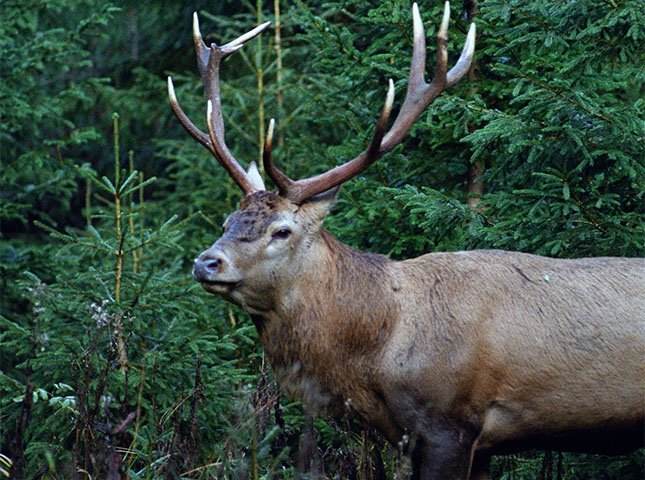Determining the age of a deer can be a fascinating endeavor for hunters, wildlife enthusiasts, and biologists alike. While it’s not always an exact science, several methods can help estimate a deer’s age.
Table of Contents
Key Takeaways
- Teeth examination is the most common method to age a deer.
- Physical appearance can provide clues about a deer’s age.
- Antler size is not always a reliable indicator of age.
- Behavioral patterns can offer insights into a deer’s maturity.
Teeth Examination: A Closer Look
Tooth Eruption and Wear
The most accurate method to determine the age of a deer, especially for those under 3.5 years, is by examining its teeth. Deer have a set pattern of tooth eruption, and as they age, the wear on these teeth can provide age clues.
- Fawns: They have three temporary or “milk” premolars.
- 1.5 years: The third premolar has three cusps, while older deer have two.
- 2.5 years: All permanent premolars and molars are present. The last molar might still be erupting.
- 3.5 years and older: Aging is determined by the wear on the molars.
Jawbone Examination
Another method involves examining the jawbone. As a deer ages, the jawbone appears more robust and less porous. This method, however, requires more expertise.
Physical Appearance
While not as accurate as teeth examination, a deer’s physical appearance can provide age estimates.
Body Size and Build
- Young deer (1-2 years): Sleek, slender, and often look lanky.
- Mature deer (3-5 years): More muscular and filled out.
- Older deer (6+ years): Might start to show signs of age, such as swaying backs or potbellies.
Coat Color
Deer’s coat color changes with the seasons, but it can also change with age. Older deer might have a grayer coat compared to the reddish-brown coat of younger deer.
Antler Development
It’s a common misconception that antler size directly correlates with age. While older deer tend to have larger antlers, it’s not a rule. Nutrition, genetics, and health play significant roles in antler development.
Behavioral Patterns
Observing a deer’s behavior can offer insights into its age. Older, more mature bucks are often more nocturnal, especially during hunting season. They might also be more solitary compared to younger bucks.
The Importance of Aging Deer
Understanding a deer’s age is crucial for wildlife management. It helps in making informed decisions about hunting and conservation efforts. Moreover, it provides insights into the health and status of the deer population in a particular area.
Challenges in Aging Deer
Aging deer is not always straightforward. Factors that can complicate the process include:
- Dietary Differences: Deer in areas with abrasive diets might show more tooth wear at a younger age.
- Genetic Factors: Just as humans age differently due to genetics, so do deer.
- Environmental Stressors: Harsh climates, predators, and hunting can influence a deer’s physical appearance and health.
The Role of Technology in Aging Deer
Modern technology, such as drones and camera traps, is playing an increasing role in wildlife management. These tools can monitor deer populations without direct human intervention, reducing stress on the animals and providing more accurate data.
Final Thoughts
Determining the age of a deer is a blend of science, observation, and sometimes, a bit of guesswork. Whether you’re a hunter, a wildlife enthusiast, or a biologist, understanding the age of deer provides valuable insights into these majestic creatures and their environment.
Frequently Asked Questions
1. Why is it important to know the age of a deer?
Knowing the age of a deer is crucial for several reasons. For hunters, it helps in making ethical decisions about which deer to harvest, ensuring a balanced age structure in the population. For wildlife biologists, it provides insights into the health and dynamics of the deer population, aiding in effective management and conservation strategies.
2. Can you age a deer by its antlers alone?
While antler size can provide some clues about a deer’s age, it’s not a definitive method. Factors like genetics, nutrition, and overall health play significant roles in antler development. Some young deer might have large antlers, while some older deer might have smaller ones.
3. Is there a difference in aging methods between bucks and does?
The method of teeth examination remains consistent for both bucks and does. However, physical appearance traits, like antler development, are specific to bucks. For does, body size and build are more reliable indicators.
4. How accurate is the tooth wear method?
Tooth wear is relatively accurate for deer up to 3.5 years. Beyond that, the accuracy diminishes, and it becomes more challenging to pinpoint the exact age.
5. Do deer in different regions age differently?
While the aging process is biologically consistent, factors like diet, climate, and hunting pressures can influence the overall health and lifespan of deer in different regions.


